Latest Blogs
When Do you Need to See a Doctor for Back Pain
Back pain is one of the most common health conditions that affects 8 out of 10 people at some point during their lives. Usually, the symptoms of back pain can be troublesome but short-lived and can last for some days. However, your back pain can be chronic if the symptoms have been bothering you for longer than 3 months. While younger adults face back pain majorly due to lifestyle-related causes, elderly people are at risk due to advancing age. It is pivotal to schedule regular health checkup for senior citizens. What may be giving you back pain? Strain in the muscles is one of the most common causes of back pain. Factors like incorrect lifting of heavy objects, improper posture, and sudden body movements can lead to muscle strain. While the discomfort from a typical muscle strain can last between three to six weeks, more severe muscle strains can take several weeks or a few months. Over activity after prolonged periods of inactivity (such as playing a sport once in a while) can also cause temporary stiffness and pain. Injured discs (tissue that cushion the spaces between each vertebra) is a leading cause of back pain. Spinal osteoarthritis that occurs due to damage of cartilages of joints in your lower back can lead to back pain. Thinning of the bone, called osteoporosis, can result in small fractures in your vertebrae which can cause pain. Vitamin D is an important nutrient that can help manage bone thinning. Though there is not enough data, various studies have shown that low levels of vitamin D can be a cause of increased joint and muscle pain. Women are at a higher risk of developing osteoporosis than men. Check out the vitamin D test price now and book within the comfort of your home. When to worry and see a doctor for my back pain? Do you keep ignoring back pain until it starts hampering daily routine activities? One primary reason for this is back pain can come and go. But, it may become chronic and be continuously present. You can benefit from taking over-the-counter pain relievers, anti-inflammatory drugs to reduce inflammation, and resting for 1-2 days. Compresses can help decrease pain and inflammation and work quite well for some people. However, certain symptoms alongside back pain may warrant an immediate action or the need to see a doctor. Seek medical attention if any of the following symptoms accompanies your back pain: Increasing weakness in your legs Loss of bladder and/or bowel control Sudden spike in pain, discomfort, weakness or numbness High fever Severe abdominal pain The pain results from a fall or severe blow to your back. Do I need tests for back pain? If the cause of your back pain is not very obvious, your treating doctor may advise: Blood work up Urine tests (to check for kidney related conditions that can give back pain at certain times) X-rays, CT, or MRI scans of the spine to assess your discs, muscles, ligaments, nerves, and blood vessels Bone scan to look for any aberrations in the bone tissue Here are 4 quick tips to keep back pain away 1. Safeguard your discs right after waking Maintain a straight back for an hour or two after waking in the morning. As per some studies, the pressure within your discs increases up to 240% when you sleep at night. At this time, your discs can be at a raised risk of herniation if made to bend or lift forces. 2. Choose your bag wisely Heavy laptop bags and purses can add unnecessary stress to your neck and back. Carry less (only what is really required) and use bags (backpacks) that have wide straps to distribute the weight more evenly. 3. Invest in an ergonomic office chair, if you are working from home Many of us may be actually working from bed while working from home. However, not having proper sitting posture and slouching forward during long work hours on laptops lead to excessive pressure on the back and can cause pain. Use a chair that helps you align and support your neck, back and thighs accurately. Take regular stretch breaks in between work. 4. Protect your back while lifting Common everyday activities, such as unloading heavy grocery bags or lifting a toddler can lead to lower back problems. Bend at your knees, not at your lower back and hold the object close to your chest while keeping your spine straight. Along with your back, keep an eye on your overall health as it may result in generalized body ache. Advancing age demands a little extra care. Do not ignore long-standing pain or worsening symptoms, especially in elderly. A full body checkup for senior citizens can be a good starting point to kick off the health journey.
Back pain: Causes, Symptoms, Diagnosis, Prevention
Do you often find yourself taking leave from work over your back pain? Well, it is one of the most common reasons people consult a doctor and miss work. Back pain can tamper with one’s daily routine and can be highly uncomfortable. Muscles, ligaments, tendons, and bones together constitute the human back, they work in tandem to support the body and help us move around. Problems with either of these can affect your back adversely. According to WHO, approximately 80% of the population suffers from back pain at least once during their lifetime. Back pain is one of the common problems seen in people across all age groups. Back pain in women But unlike men, there are a lot of changes that happen in a woman with age right from hormonal changes to menstruation and pregnancy that take a toll on the back. Whether you’re a working woman or a housewife, it goes without saying that every woman has a massive workload and long working hours both at the office and home which affects her overall health. However, the back and the spinal cord which are the pillars of the body are the ones that are most affected. Take extra care of your health with Metropolis TruHealth Smart Women Health Package. What are the possible causes of back pain ? The most common cause of back pain is muscle strain and incorrect posture. Other causes include: Long working hours while sitting in chairs and lack of exercise Obesity · Poor posture: Often we don’t realize, but while sitting or working on computer screens, we tend to adopt a hunched back position, this results in back as well as shoulder pain later on. Muscle spasm, fractures, damaged disks (cushions between our bones in the spine) Bulging or ruptured discs: Rupturing of a disc can cause extra pressure on a nerve, and press the nerve causing your back pain. Similarly, bulging discs can also put pressure on your nerves and lead to debilitating backaches. Osteoporosis: When your bones become brittle, your spine’s vertebrae can develop small painful fractures. Arthritis: Another major cause of back pain is spinal osteoarthritis, which is due to damage in the cartilage of joints in the lower back. Eventually, the space around the spinal cord starts to get narrower, leading to what is known as spinal stenosis. This could be another type of arthritis too. Book a test here and know if it can be rheumatoid arthritis. Watch out for these symptoms ! A shooting pain anywhere on the back or a burning or stabbing sensation that sometimes runs down till your leg or the foot. If it is due to muscle strain, or posture, that pain is usually short-lived, maybe a few days or weeks. But if you suffer from back pain for more than 3 months, you should consult a doctor. Mostly the pain goes away with minor treatment, exercise, or self-care, but if the back pain is accompanied by fever, numbness in the legs, constant weakness, weight loss, or difficulty while urinating, you should seek immediate medical assistance. Diagnosis for back pain You have acute pain if the pain lasts for a few weeks, but if the pain is persistent, and lasts for more than 3 months, it is a chronic or long-term pain that needs medical supervision. Your doctor will examine and assess your back and if they suspect something, they might order one of the following tests- X-ray: An X-ray is done to check the alignment of the bones, and help detect signs of broken bones or arthritis. MRI or CT scans: Since X-rays don’t show any damages to the soft tissues, it is important to have an MRI done, to detect problems with blood vessels, muscles, nerves, and ligaments. Blood tests: Though it is a rarity to order for blood tests, it can be helpful when you want to determine whether some infection is the cause of your back pain. Bone scans: These scans are done to check if there is a bone tumor or compression fractures due to osteoporosis, basically performed to detect any sort of abnormalities in your bone tissue. EMG (electromyography): It is a nerve study that measures the electrical impulses produced by nerves and how your muscles react to them. Treatment of back pain While for acute pain, pain relief medicines, and warm water heating can be sufficient, for chronic pain conditions, the doctor suggests medications like- Over-the-counter pain relievers Topical pain relievers such as creams, ointments, sprays, or patches. Muscle relaxants Back pain can be a debilitating and life-changing condition. Hence, if you have a backache that is recurrent in nature or if your back pain fails to show any improvement even after taking sufficient rest, it is wise to consult a spine specialist. Prevention is better than cure Being a little careful and agile can go a long way in curtailing the risk of back pain. Here are a few tips you can follow, in order to ease that back pain. Calcium and vitamin D for better muscle and bone health: Include calcium and vitamin D in your diet. Let your bones, muscles, and joints heal from severe back pain. Check your calcium and vitamin D levels here. Posture: Your posture while sitting as well as while standing can immensely impact your back. While sitting, always try to have your knees and hips leveled and keep your feet flat on the floor, if you use a keyboard, have your elbows at right angles and support your back, at the same time, when sitting for long hours. While standing, your back should always be straight, and you should balance your body weight evenly on both your feet. Regular exercise: Flexibility training can help with back pain, a professional would be better able to guide you through exercises that will help build strength and keep your body weight in control as well. Other precautions include wearing comfortable shoes, using a comfortable mattress, not smoking, and keeping your body weight in check. With daily stretches, a proper diet, and maintaining correct postures, you can avoid and prevent back pain easily. Your back endures a lot of wear & tear over the course of a lifetime- Take care of it!
5 Vitamin D Foods: Sources & Benefits
Vitamin D, also known as the sunshine vitamin, is an essential nutrient required for maintaining health and wellness. It is both a nutrient you eat and a hormone your body produces when exposed to sunlight. This fat-soluble vitamin is notably responsible for calcium absorption in the body, thus improving bone mineral density. It also regulates cellular growth and supports the immune and neuromuscular functions in the body. Some studies suggest that vitamin D can help control infections and alleviate inflammation. In addition, there are claims that vitamin D can play a role in protecting you from diseases such as diabetes, heart disease, and even depression. Are you sure you are getting enough vitamin D in your diet? Check your vitamin D levels with a simple blood test in the comfort of your home. Since vitamin D is involved in so many bodily functions, you cannot take a deficiency of vitamin D lightly. Lack of vitamin D can cause a plethora of conditions such as rickets, osteoporosis, osteomalacia, brittle bones, a weakened immune system, inflammation, muscle fatigue, and weakness. A lack of vitamin D can even affect your nervous system. The Recommended Dietary Allowance of vitamin D for all Indian population, in general, is 400 IU (10 mcg) daily.* Some sources mention that for adults over 70, it should be 800 IU (25 mcg). Consult a doctor to help you understand how much vitamin D you need as per your sun exposure. For people who don’t or cannot spend a lot of time outdoors, it can be difficult to get enough vitamin D and doses might be higher. If you have concerns that you are not getting enough vitamin D from direct sunlight, consuming the following vitamin D-rich foods will help increase the overall amount of vitamin D in your body. Here are 5 food groups that are rich in vitamin D: 1. Egg Yolks Whole eggs are the healthy and wonderfully nutritious food, which you will ever find! Although most of us avoid eating egg yolks as they have historically gotten a bad rap for raising levels of bad cholesterol in the body. Skipping egg yolks in favor of egg whites will decrease your calorie and fat intake but you will be missing out on some of the protein, key nutrients such as choline, essential for brain development, and several of the minerals in yolks, such as selenium and zinc, which play a role in boosting your immune system. And you will be missing out on vitamin D, too. One large egg has 44 IU which is 6 % of your daily value. Eating up to 3 whole eggs is considered safe for a healthy adult. So, enjoy them in moderation. 2. Fatty Fish Not only is fish a great option for protein but it is also rich in vitamin D. If you have vitamin D deficiency, it is mostly advised to eat fish on a daily basis. Fishes such as salmon, tuna, sardines, trout, hilsa, swordfish fish, and mackerel being good sources of healthy protein and omega-3 fatty acids, will be a great addition to anyone’s diet looking to get more vitamin D. Include fish in your dinner plate three times per week. On average, 100 grams serving of salmon provides 988 IU of vitamin D, i.e., 124% of the daily value. 3. Milk and Milk Products Vegetarians need not worry! Being an excellent source of calcium, milk is also rich in vitamin D. Hence, including a glass of cow milk in your breakfast meal can improve the vitamin D level in your body. It will not only boost your metabolism but also will ensure that you don’t feel worn out throughout the day. Full-fat milk has the maximum vitamin D content in it. Fat-soluble vitamins are lost when the fat is removed from the full-fat milk. One cup of milk provides about 115–130 IU of vitamin D which is 15–22% a person’s daily requirement. Health experts and nutritionists also suggest that adding milk and milk products like yogurt, cheese, buttermilk, and butter to your daily diet may prevent you from many bone diseases. 4. Mushrooms Mushrooms, a kind of superfood that packs vitamin punch, are the only good plant source of vitamin D. They are extremely nutritional, contain an array of vitamins and minerals. But not all mushrooms have the same amount of vitamin D, it varies depending on the type and variety of the mushroom. While commercially grown mushrooms are often grown in the dark, they don't naturally offer a high amount of vitamin D, some are exposed to UV light, providing a larger dose of the vitamin as a result. A serving has 124-1,022 IU of vitamin D per 100 grams, depending on the amount of UV light the mushrooms are exposed to. So, it is always better to pick sundried mushrooms as they have higher vitamin D content. If you are vegetarian or vegan, specific mushrooms may be an option. These vitamin-loaded mushrooms are really tasty and can be easily incorporated into your diet. 5. Fortified Foods Natural sources of vitamin D are limited, especially if you are vegan or don’t like fish. Fortunately, some food products are designed to add nutrients that don’t naturally occur in the product. Manufacturers add vitamin D to many commercially available food products. These foods are then described as being fortified with vitamin D, or other nutrients. Common fortified foods with extra vitamin D and other nutrients include: cow’s milk soy milk almond milk orange juice yogurt various breakfast cereals. These foods might contain 54-136 IU per serving. But fortified foods can contain added ingredients, like sugar or saturated fats that make the product less healthy. So, it is important to look for products with no added sugar. Eating plenty of these listed vitamin D-rich foods is a great way to get enough vitamin D. However, depending on a person’s dietary preferences, consuming enough vitamin D may be difficult. Remember to not overconsume as excess vitamin D can cause the body to absorb too much calcium, leading to an increased risk of kidney stones and heart disease. We still suggest that the easiest way of getting your daily dose of vitamin D is spending time in the sun. Aim for 15-20 minutes of mid-day sun exposure at least twice per week. However, if this is not possible, vitamin D supplements like cod liver oil, maybe a beneficial choice.
Blood tests for rheumatoid arthritis: Understanding the basics
Rheumatoid arthritis: Your joint’s enemy Rheumatoid arthritis (RA) is an autoimmune condition that affects your joints, joint linings and causes pain, swelling, and inflammation. An autoimmune disease is a health condition when your body’s immune system mistakenly identifies your own body cells as harmful foreign bodies and starts damaging them. RA affects small joints (like the wrist) first and later on, can include other large joints like elbow, knee, etc. Also, usually joints of both sides are involved. Though it chiefly affects your joints, it can show symptoms related to the eyes, skin, lungs, blood vessels, etc. Causes of rheumatoid arthritis While the exact cause of RA is not known, various factors can increase the risk of developing RA, for example, Family history of RA Gender (women are at an increased risk of getting RA). A few factors that may trigger the onset of RA include: Injury to bones or joints, such as a fracture, joint dislocation, or ligament tear Smoking Being overweight History of viral infections, such as the Epstein-Barr virus. Diagnosing rheumatoid arthritis It might not be possible through blood tests only to get a simple yes-or-no answer to whether you have RA. But, they are extremely important to guide your doctor around the diagnosis, and also give hints on how the disease is progressing or how helpful the treatment is after the diagnosis is confirmed. Blood tests for rheumatoid arthritis Rheumatoid factor (RF) test: The RF test looks for rheumatoid factor (RF) antibodies present in the blood. These are the first autoantibodies collected in people with RA and found in tissue lining your joints. Autoantibodies are produced in autoimmune conditions like RA when the body starts attacking its own cells. The results of the RF test are reported as units per milliliter (u/mL). Normal levels of RF antibodies in your blood are less than 40 to 60 u/mL. A higher number indicates a positive RF result and points towards RA. However, the RF antibodies are not exclusive to RA, they can also show up if you have other autoimmune disorders. Such conditions can include hepatitis, leukemia, and lupus. Not all people with RF have RA. The test results need to be correlated with other clinical findings, other tests and validated thoroughly through an expert physician. Erythrocyte sedimentation rate (ESR): Primarily, an ESR test measures how quickly the red blood cells in a blood sample settle at the bottom of a vertical tube. It is also called the sed rate. Inflammation or infection in the body can cause extra proteins to build up in the blood, which can cause to settle it faster and results in a high ESR. This increase in ESR may indicate inflammation in your joints. C-reactive protein (CRP): This test looks for CRP- a ring-shaped protein that may indicate inflammation in your joints. It is produced by the liver as a result of inflammation. Please note that the CRP test may be more sensitive than the ESR test, however, it does not confirm the diagnosis of RA. Just like the RF test. The CRP levels may rise in presence of any autoimmune response or bacterial infection. If you have a false negative on the RF test, the ESR or CRP test will indicate your doctor of RA. Complete blood count (CBC): The CBC test looks for different types of blood cells in the blood along with certain other blood parameters. Low hemoglobin and hematocrit values may be associated with RA. Connecting the dots Along with your blood test results, you can be asked to take radiological investigations like X-rays. They are aimed at identifying the damage caused to the bones in a more physical setup. Your doctor will combine the results of the RF antibodies test, ESR, CRP, and CBC tests, dig deeper into your joint pain symptoms (which bones are affected, symmetric joint pain or not), and/or analyze X-ray results to steer towards a diagnosis of RA. You may also be requested to undertake the blood tests for RA periodically as they will help monitor the progress of your disorder. Do not ignore that morning stiffness in joints. It could be RA! Why wait further when you can get tested at the comfort of your home with Metropolis? Let modern diagnostic tools come to your rescue and help devise an effective treatment plan. Have happy and strong joints!
Effective Back Pain Relief: 7 Exercises and Stretches for a Healthier Back
Modern technology has blessed us with plenty of benefits and conveniences, but with one major drawback: our fondness for prolonged sitting. Many of us sit for more than nine hours a day, seven days a week. Experts are now convinced that sitting for long stretches can affect our health in the long run and have linked too much sitting to several ailments such as back pain, increased stress of the upper and lower back, neck, arms and shoulders. With the work from home scenario, prolonged sitting in a hunched over position can put greater strain on the back muscles and spinal discs, the fluid-filled cushions that protect the vertebrae from rubbing against each other and act as the shock absorber for your spine. However, you can save your back from the pain by finding simple ways to incorporate health and fitness into everyday work life. It doesn’t have to take a lot of efforts to track and take better care of your health on the job. Book a complete health check-up in no time. Working from home and feeling that restricted movement is harming your back? Including stretching exercises into your daily routine can help relieve back pain and improve your posture and flexibility. 7 simple stretches to relieve back pain Stretching, improving hip flexibility and core stability can help reduce the symptoms of lower back pain. To help you get started, we have put together this list of 7 simple yet effective work-friendly stretching exercises that will counter the effects of sitting all day. Bridge exercise Rest comfortably on your back with your knees bent and your feet flat on the floor. Keeping your shoulders and head pressed against the floor and relaxed, tighten your abdominal and gluteal muscles. Keeping your arms by your side and your core engaged, raise your hips towards the ceiling to form a straight line from your knees to your shoulders, with your chest off the ground. Try to hold the position long enough to complete 3-4 deep breaths. Return to the starting position. Do five repetitions and gradually work up to 20. Do not try to hold your breath as you perform this exercise. Knee-to-chest stretch Lie on your back with your heels flat on the floor. Using both hands, pull up one knee and press it to your chest while keeping the other leg bent or extended straight out along the floor. Feel the tight stretch down the back of your leg and the gluteus muscles. Tighten your abdominals and press your spine all the way down to your tailbone and avoid lifting your hips. Hold for 15-20 seconds. Return to the starting position, switch legs and repeat the same thing. Next, return to the starting position and then repeat with both legs at the same time, preferably 2-3 times. To take it a notch higher, tuck your chin into your chest and lift your head up toward your knee. Back twist For occasions, when you’re unable to get away from your work area, doing a back twist could be a good alternative. Sit comfortably in your chair and place your right arm behind your right hip. Twist to your right and hold for 10 seconds, then repeat on the other side. Do this 4-5 times in both the directions. This is a natural stretch that you can do when your body is feeling a bit stiff and tired. Your bones and muscles need Vitamin D for optimal functioning. Sure your body has enough of it? Book a Vitamin D test now. Prayer Stretch or Child’s pose Sit back on your heels while tucking legs underneath your thighs and bend forward at the waist, extending arms out over the head onto the ground, making sure your lower back muscles are stretched completely and your hips are resting on the heels. Rest your belly on your thighs. Hold for 30-60 seconds and slowly bring yourself back to the start. Breathe deeply, releasing any tension or tightness. Repeat 3-5 times to help relieve back pain and strengthen your muscles. Feeling better now? You can do this pose several times during the day, and also between each stretch. Lower-Abs lifts Simply, sit straight up, with your knees bent and feet flat on the floor. Lift one leg up at a 90 degree angle, keeping the core tight. After doing 7-8 reps, switch to the other leg. And then try lifting both up at the same time. Alternatively, extend your right leg out in front of you until it’s straight and parallel with the floor. Hold the pose for 10 seconds, release, and repeat with your left leg. You can make it more challenging by positioning both your hands parallel to the floor, in a straight-back position. Spinal Twist Keeping seated with your knees in line with one another flat on the floor, place your right hand on your left knee and twist your entire upper body to the left, looking behind your shoulder. You can place your hands on the chair handle to help deepen the stretching exercise. Take a few deep breaths, and then twist back and repeat on the other side. Hold on for 20-30 seconds and as far as you comfortably can. This stretch keeps your spine flexible, and is also beneficial to your lower back. Hip-Flexor stretching exercise To begin with, place one foot on top of your chair, shift slightly forward onto your straight leg, bringing your back hip forward as well. Feel the stretch on your hip flexor of that back leg. Make sure your lower back is straight throughout; if not activate your core by pulling your torso back towards your spine. Remain in this pose for 10-15 seconds and then switch sides before you repeat. When to seek Medical Care for lower back pain While not common, certain back pain symptoms can signal a serious underlying medical condition. If your lower back pain interferes with daily life activities, it’s advisable to seek medical attention to obtain an accurate diagnosis. Your health numbers can give a fair enough idea to your healthcare provider what might be causing your back pain. Book a full body check-up now. Apart from these, a diagnostic imaging scan including X-ray, CT scan, and MRI can provide more insights and may be indicated if you have acute pain, not relieved within two or three months or one that does not get better with nonsurgical treatments. You can now save tax on the Preventive health check-ups up to Rs. 5000, under section 80D of Income Tax Act, 1961. Ready to relieve back pain at home? You use your lower back for several important things, from walking and running to simply getting out of bed in the morning, which makes it essential to keep it in good working order with regular stretching. While some mild discomfort and pain can be expected anytime you start a new workout, as you work your way back to better health and your muscles strengthen, that pain and discomfort should disappear.
8 Things You Need To Know About Osteoporosis Prevention
Osteoporosis, is a disease where your bones start to become thin. This disease is d also known as ‘the silent epidemic’. Normally our bones reach maximum density halfway through our twenties and begin to get more slender from the time we hit our mid-30s. Women are generally at higher risk for osteoporosis since the process speeds up after menopause. According to an imminent study, around one in 3 women and one in twelve men who have crossed the age of 50 have osteoporosis. However, there are considerable that you can take to diminish your danger of getting osteoporosis. Try not to give up without a fight! Know The Symptoms: Firstly get an X- Ray done to check the thickness of your bones. If any of your parents has a broken hip or if by any chance you have rheumatoid arthritis or have experienced menopause, getting a test done for osteoporosis in inevitable. Quit Smoking: Smoking builds your danger of osteoporosis in addition to the various other harms it does to your body. Quit Alcohol: Drinking more than 250 ml of Alcohol can build your danger of osteoporosis. Adhere to the amount prescribed by your doctor and try to avoid alcohol on certain days of the week. Calcium: You should consume at least 1000 mg a day of calcium in your diets. Try including fruits, yogurt, kale, okra and tofu in your diet as they contain 300-400 mg of calcium. Vitamin D: Vitamin D is very important for solid bones, yet it’s the one vitamin that is difficult to get enough of from nourishment alone in light of the fact that 80-90% of our vitamin D is assimilated through our skins from sunlight. Exercise Regularly: To secure your bone health, running, cycling, swimming and lifting light weights are all great. Try to work out for at least thirty minutes five times each week. Take Supplements: Your specialist may prescribe a supplement of around 25 micrograms a day of vitamin D. In some cases it’s given in mix with calcium. On the off chance that you have been found to have osteoporosis, taking a solution called a bisphosphonate can prevent it from deteriorating. These tablets are typically taken day by day, week after week or in some cases once per month. However, these supplements do come with some side effects. So, make sure you have a thorough conversation with your doctor. Get a Test Done: Finally, get a test done. We have packages for Osteoporosis Profile- 1, Osteoporosis Profile- 2, and Osteoporosis Profile- 3 which provides a comprehensive profile for better bone health-Ca, P, Alkaline Phosphatase-Total & Bone Fraction, DPD, Osteocalcin, 25 OH Vitamin D, PTH, E2. For test packages for Osteoporosis click HERE
Low Vitamin D levels – Significance beyond Bone Health: Metropolis Healthcare
Despite ample sunlight in India throughout the year, almost 80% of Indians are deficient in Vitamin D. Prolonged Vitamin D deficiency leads to a host of health issues. Recent studies link Vitamin D Deficiency with Diabetes, metabolic syndrome, blood pressure, heart disease, stroke and may even trigger symptoms of depression in a healthy population. There are various studies that directly correlate Vitamin D deficiency to PTH levels in the blood which is studied further in detail here. Vitamin D Deficiency& Parathyroid Hormone (PTH) Vitamin D deficiency, simply put is having low levels of Vitamin D in body, which causes the bones to become thin, porous and brittle.Vitamin D helps the intestines absorb calcium. Once activated, Vitamin D acts to greatly increase the amount of calcium that the intestines can absorb from food. For patients with vitamin D deficiency, it is difficult for the body to obtain calcium from the diet. This often leads to a rise in the PTH level, since the parathyroid glands must increase the PTH production, in order to increase calcium levels they absorb it from bones. Therefore, people with a normal blood calcium levels and a high PTH level may have secondary hyperparathyroidism, which means that the high PTH level is a normal response of healthy parathyroid glands to another problem (like vitamin D deficiency or kidney failure).The sole purpose of the parathyroid glands is to control calcium within the blood in a very tight range between 9.0 and 10.1. In doing so, parathyroid glands also control how much calcium is in the bones, and therefore, how strong and dense the bones are. Primary hyperparathyroidism Primary hyperparathyroidism most of the times results due to a non-cancerous tumor of the parathyroid, called an adenoma. Because of the adenoma, the parathyroid can make too much PTH, which can cause calcium to be too high in the blood, and overtime, lead to poor bone health. Sometimes doctors decide to treat primary hyperparathyroidism surgically, by removing the adenoma. If you have primary hyperparathyroidism, you need to work with your doctor to see if you can take vitamin D. Since you may have high blood calcium, it’s important to make sure you’re under a doctor’s supervision if considering taking vitamin D. Secondary hyperparathyroidism Secondary hyperparathyroidism is caused by either long term vitamin D deficiency or kidney failure. With long term vitamin D deficiency, the body may not get enough vitamin D to absorb adequate calcium. This can be corrected by treating vitamin D deficiency. It is important to note that accurate diagnosis is important to get to the core of the disorder and decide course and dosage of treatment accordingly. How does the Human body ensure that there is adequate amount of calcium in the blood? The human body can produce Vitamin D3 from direct exposure to sunlight. 7-dehydrocholestrerol is converted to Vitamin D3 with the help of UV Rays. However a large population of India does not face the sun as over 80% of the population is deficient in Vitamin D Poor/inefficient exposure to sunlight Sunscreen, full sleeved clothes acts as an impediment Dark colored skin requires longer exposure to sunlight Poor dietary /supplementary intake When you get enough vitamin D from good sun exposure and supplementation habits and enough calcium from your diet, this allows you to maintain a healthy calcium level in your blood and keep good amounts of calcium in your bones. Healthy vitamin D and calcium habits also help keep your PTH levels in check. Prolonged Vitamin D Insufficiency or Deficiency leads to reflex increase in PTH levels in the blood. This is called secondary Hyperparathyroidism, in which PTH mobilizes bone calcium which leads to increased bone fragility and risk of fractures or increased level of calcium in blood. Secondary Hyperparathyroidism is commonly the result of compensatory over secretion of PTH in response to Vitamin D deficiency. In a recent study done by the R&D team at Metropolis Healthcare, the following are the study results. According to R&D team in Metropolis Healthcare, when the calcium level in the blood drops, due to Vitamin D deficiency, high levels of Parathyroid Hormone (PTH) are secreted by the parathyroid gland, which absorbs calcium from bones, leading it to become brittle and porous. How it affects the people? Many people with Vitamin D deficiency can have increased levels of Parathyroid Hormone (PTH) in the body. The main function of PTH is to maintain calcium levels in the blood stream. With the decrease in Vitamin D levels, there will be drop in the calcium levels, in order to balance the calcium level in the blood, parathyroid gland starts secreting high levels of parathyroid hormone. PTH starts to absorb calcium from bone replenishing the calcium level in the blood, which in turns leads to weakening of bones, making it more fragile or prone to fractures. The Study In an analysis of over 7,542 patients who underwent both Vitamin D and PTH tests, the following trends emerged. An increasing trend can be witnessed from 30 to 40 age group and above, indicating an increasing level of susceptibility with progression in age Observations: Elevated PTH levels were found in the age group of 20 – 50 years contributing to 24.11%. Such patients are at a high risk of developing High BP, Diabetes, Heart diseases. Of these deficient samples 28.98% were of women.Vitamin D deficiency with PTH elevation can have several ill effects on bone and increased risk of high BP, Diabetes & Heart disease.
 Home Visit
Home Visit Upload
Upload




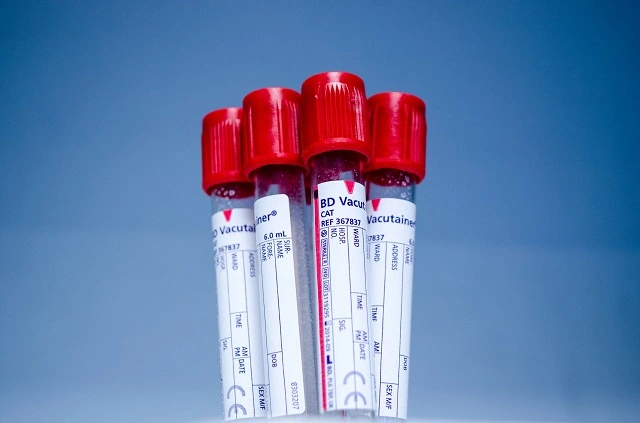
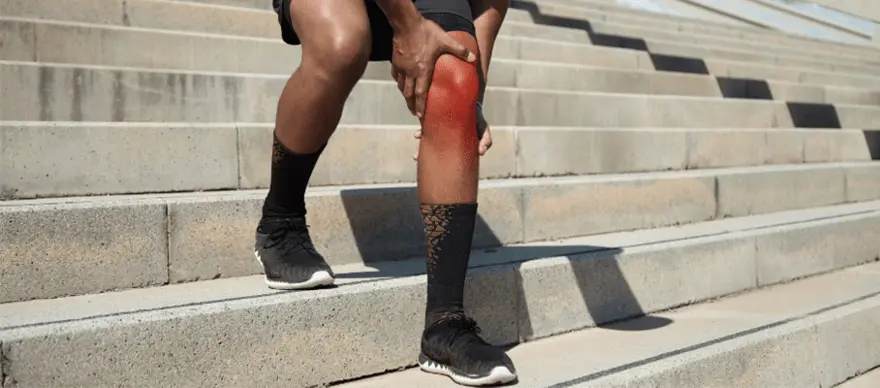
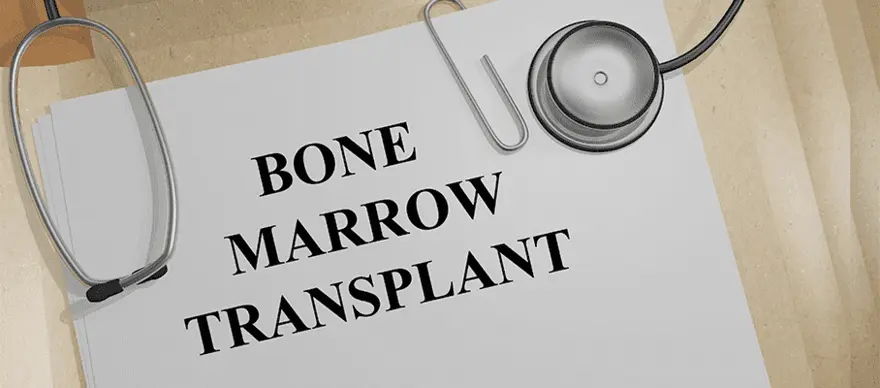


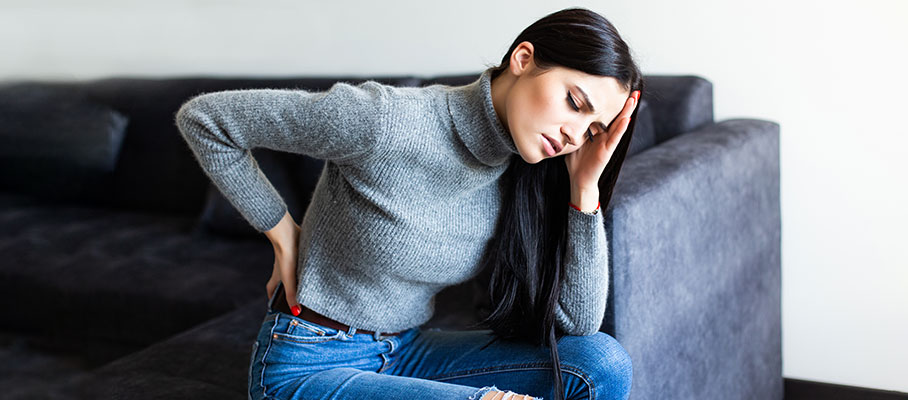


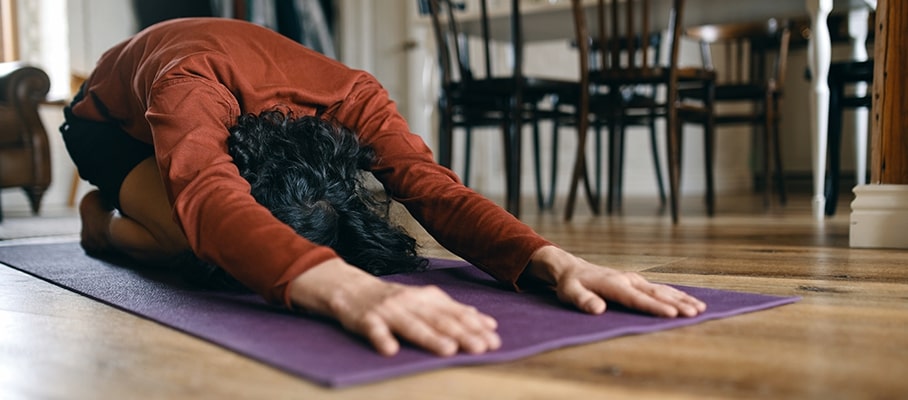
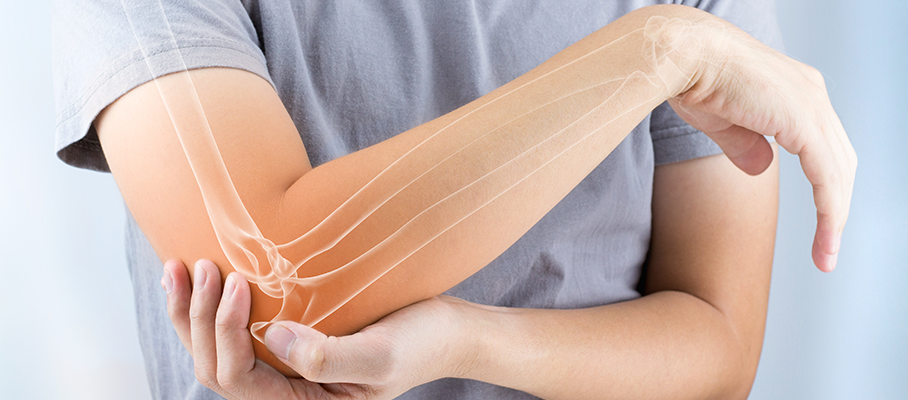
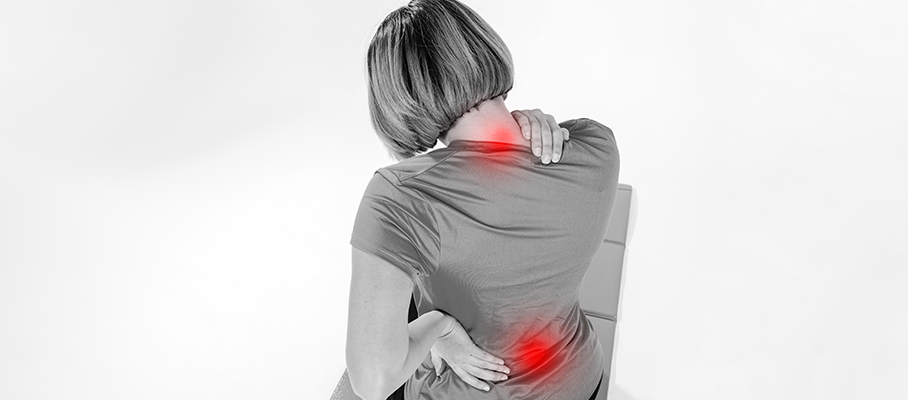





 WhatsApp
WhatsApp